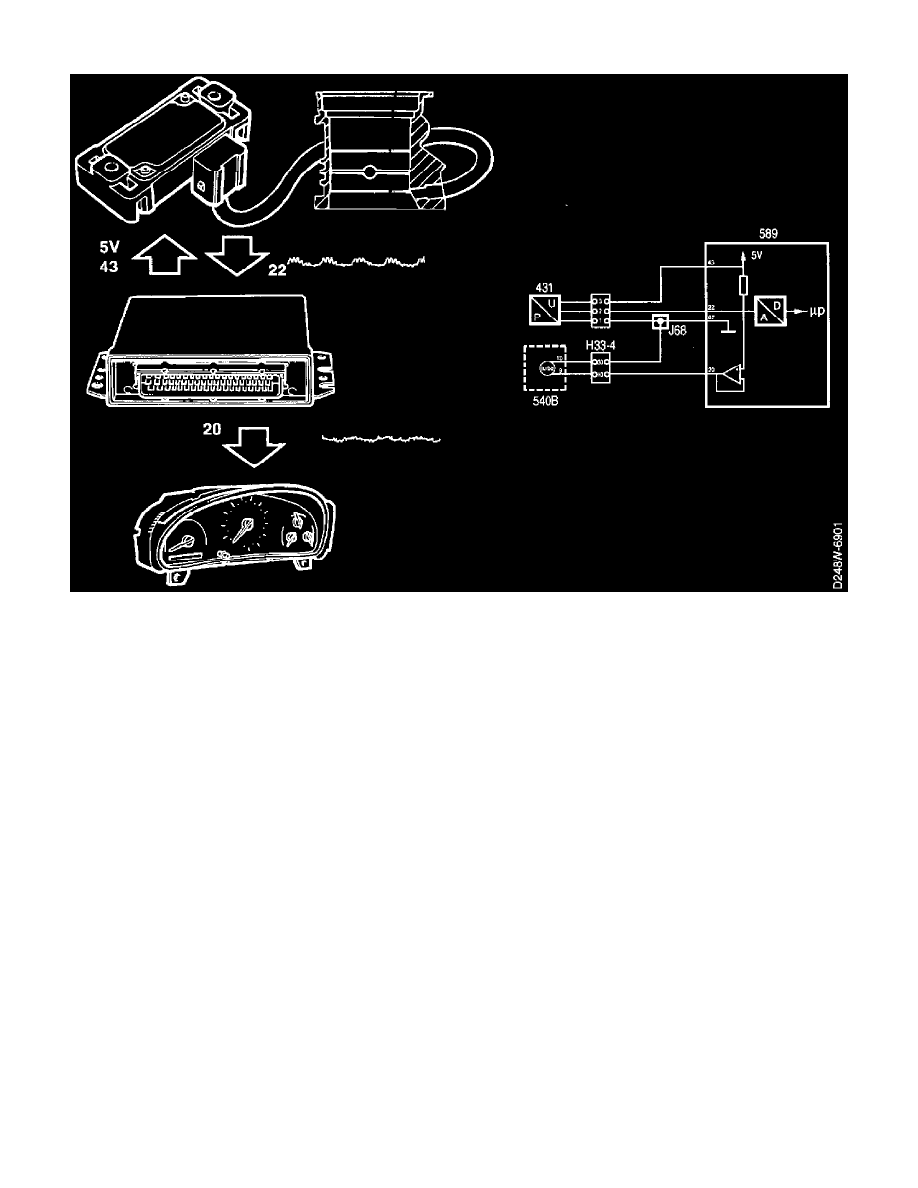900 SE Sedan L4-1985cc 2.0L DOHC Turbo EFI (1996)

Manifold Pressure/Vacuum Sensor: Description and Operation
The pressure sensor contains a pressure-sensitive ceramic sensing device, an amplifier and a circuit for temperature compensation. The pressure sensor is
connected by a short special hose to the engine intake manifold after the throttle and is supplied with 5 V from ECM pin 43 and grounded from ECM pin
67.
Depending on the pressure in the intake manifold, the pressure sensor supplies a proportional voltage to ECM pin 22.
The ECM uses pressure and temperature in the intake manifold to calculate the engine load, i.e. how great an air mass each cylinder draws in. The fuel
injection time is proportional to the air mass drawn in. At atmospheric pressure (1100 kPa), the voltage from the pressure sensor is approx. 1.9 V.
Information from the pressure sensor is also used to calculate ignition timing and for boost pressure control.
If the hose comes loose or the sensor fails, and in the event of a break in the circuit, the engine control module will use the throttle position as a default
value.
Pressure Signal
The ECM emits a pressure signal from pin 20. The signal is a voltage which is dependent on the pressure in the intake manifold. The voltage at 100 kPa
(atmospheric pressure) is approx. 1.0 V.
The pressure signal is used by the main instrument display panel, which also uses sensor ground from pin 67 as a reference ground for precise pressure
measurement.
